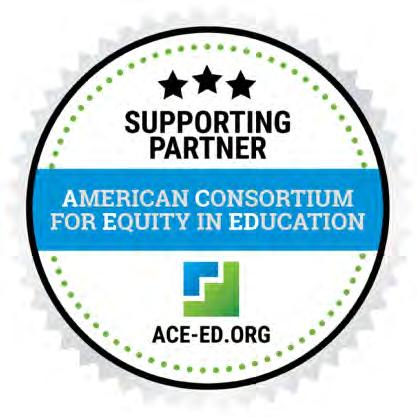
4 minute read
Addressing Excellence Gaps: Ability Grouping
By Jonathan A. Plucker
In several of my recent columns, I’ve shared research-backed recommendations for how to identify advanced students in more equitable ways than those traditionally used in American schools. But advanced learning is about programming, not identification. They go hand-in-hand of course, but there is no point in trying to identify talented students if your district or school doesn’t have high-quality, advanced learning opportunities.
Advertisement
With this issue’s column, we start to dig into what the research says about advanced learning programs and services, and how they can be designed with both equity and excellence in mind. Let’s start with a topic completely lacking in controversy: ability grouping.
I’m kidding, of course. If you want to get a group of educators riled up, walk into the room and say the words “ability grouping.” That’s a fair reaction, because the expert opinion on the topic is confusing. When I went through my preservice teacher prep program in the early 90s, I would go from one class where we were told that grouping is always bad to another where we were told grouping is always good, with other professors sharing perspectives in between. And with conflicting studies appearing to emerge on a regular basis, it is understandable that educators are confused about the effects of ability grouping.
A quick note on terminology before we get much further: “Ability grouping” has little to do with ability. A better term is “performance grouping,” as most decisions about how to differentiate for students are based on their current performance level (i.e., are they working below, at, or above grade-level?). I’ll use grouping as shorthand for flexible ability grouping throughout this column.
Why group at all? Well, we have to group students in some way – I don’t know of any schools where the students wander around the building like free-range chickens. We choose to group student by age in most schools, but there is nothing magical or predestined about grouping primarily by biological age. So we must group, but how?
Several colleagues and I conducted a study that provides some insight into the need for grouping (Peters et al., 2017). We were interested in estimating the percent of students who start the school year having already shown they had mastered the standards for that year. In other words, what percent of fourth graders show up for the first day of school having already performed at the fifth grade-level or higher on the previous year’s state achievement test? That’s a pretty conservative definition of above-grade-level, as it doesn’t take into account students who have the potential to work above-grade-level, just those who are already performing at such high levels.
The results suggest that for third through eighth graders, 20-49% were above grade-level in
reading/English and 14-37% in math on state assessments. Using NAEP data, we found evidence that 15% of students in those grades perform at least three grade levels ahead in reading/English, 6% in math.
That’s an enormous range of performance levels for teachers to accommodate in a single classroom, and it’s no wonder that research generally shows that whole-class instruction rarely works for advanced students or helps close excellence gaps (Plucker & Callahan, 2020; Plucker & Peters, 2016). The performance range of students in the average classroom is just too much to handle effectively.
My current take on the relevant research is that (a)ability grouping has the most positive effect on the lowest- and highest-achieving students, (b) what happens within the groups is more important than the groups themselves, (c)ability grouping done well appears to close excellence gaps, and (d) within-class grouping appears to work better than between-class grouping. Space limitations prevent a detailed analysis on each of these points, but interested readers can refer to the cited resources (Plucker & Callahan, 2020; Steenbergen-Hu et al., 2016).
Of course, the research is also replete with qualitative research on what happens when grouping is done carelessly or not closely monitored, with low-income, special education, Black, and Latinx students placed into the lower groups, where they then receive low quality instruction with few resources, encounter low expectations, and become stuck in that group forever. From my perspective, this is when flexible ability grouping becomes tracking – the placing of students into academic tracks from which they don’t benefit and can never escape. Tracking is always a bad thing. There’s a straightforward (if not easy) solution to prevent grouping from becoming tracking: Be vigilant. Are students in the more remedial and more advanced groups learning at a quicker pace than in whole-class instruction? Do formative assessments result in students moving up to more advanced groups throughout the year as their progress dictates? If the answer to either question is no, then educators should closely examine the quality of instruction, curricula, and resources being used in each group.
Of course, even with the use of such groups, differentiation is still needed. For example, if you’re fourth graders are performing across nine different grade-levels and you use various grouping strategies to reduce the performance range, odds are that each teacher is still teaching three or more grade-levels of performance at any given moment. And even if all goes as planned, that range will inevitably grow as some students learn more quickly than others. Differentiation is still a vital teaching skill in grouped instruction.

Jonathan A. Plucker is the Julian C. Stanley Professor of Talent Development at the Center for Talented Youth at Johns Hopkins University, where he is also a Professor of Education. He currently serves as President of the National Association for Gifted Children board of directors. He can be followed on Twitter at @JonathanPlucker or reached at jplucker@jhu.edu. His opinions do not necessarily re ect those of Johns Hopkins, CTY, or NAGC.










